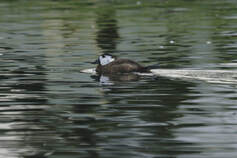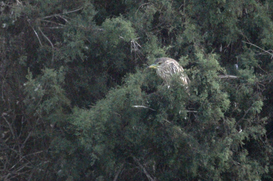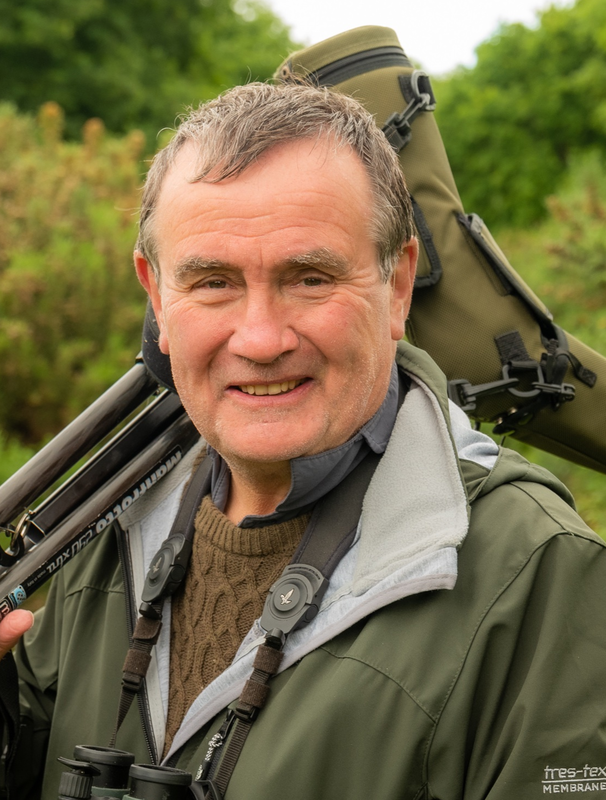I decided that we might do better with a guide, but then had trouble finding one. I found John Cantelo’s website, someone I had met briefly at Sandwich Bay in the 1980s, which was full of useful tips, but many of the connections to guides were dead links, presumably companies that had fallen victim to the effects of the pandemic, although eventually I found a guide. (Now corrected - JC).
I do like birding on my own, but there are advantages to having a guide. You put some money back into the local economy, and with people who are making a living from the natural environment. I may be able to find out where the best sites are (we went nowhere I didn’t know about today, at least in general terms), but a guide will know which sites are best and which birds are where, which is important when you have limited time. And guides may also be able to access sites which you cannot otherwise get to.

Manuel was a birder, not just a bird guide. Almost the first thing he said to me was “I read your blog! The birds you saw at sea. Fantastic!”. Then he started telling me what rare birds were around: “here,” he said, as we passed one place on our way out of Cadiz, “there is a very rare bird, Yellow-browed Warbler!” And then some of the rare birds he had seen: “one year, a Hooded Crow, and sometimes we get Great Black-backed Gull or Common Gull. Maybe for you, not so good, but here! One year, I found an Iceland Gull. Wow. Fantastic!” It does make you wonder a little bit about the merits of finding rarities, when someone is telling you all about common birds from home, on his way to show you relatively common birds in his area. But, then again, that is part of the magic of bird migration. The fact that almost anything can turn up almost anywhere.
Manuel was also very enthusiastic. Excited by almost everything he saw. And everything was “fantastic”, although I suspect that “fantastic” may be a Spanglish idiom, in the same sort of way I would probably describe everything as “magnifico” if I could speak Spanish. Nevertheless, hearing that everything was “fantastic” was, well, rather fantastic.
 Ferruginous Duck & friends
Ferruginous Duck & friends Our first port of call was what appeared to be a holiday development named Costa Ballena (whale coast). Here, there was an artificial lake, just along from a water park, which was quiet enough to hold a good selection of birds. There were plenty of Coots and Mallards, and amongst them a few Shovelers and a couple of Pochard, while there also several Little Grebes. A few Little Egrets including one taking off and calling vociferously. Then, I spotted a male Ferruginous Duck. Not a bird I expected to see. I showed it to Manuel and he was pleased. “That is a good start,” he said, “I only see a few of those each year!”.
 White-headed Duck
White-headed Duck  Little Swift
Little Swift  Marbled Duck
Marbled Duck The two pools can viewed from the surrounding roads (only one of which is named Camino Colorado), and they were a bit messy, with plastic and bottles strewn around. We’ve seen worse, and in general the birds don’t seem to care. The first pool was a site for Marbled Teal, and two birds swam out from the reeds beside the road and then settled on the mud on the further side of the pool. Both bore green colour-rings and although I didn’t get the numbers, another Spanish birder used Manuel’s scope to get the details. They were joined by a couple of Western Swamphens (formerly known as Purple Gallinules) while some other birds here included Black-winged Stilt, Common Snipe, Zitting Cisticola and Melodious Warbler.
 Night Heron
Night Heron The laguna is artificial, and looks very square on a map, although you probably wouldn’t know from on the ground. There were another nine White-headed Ducks along with a selection of commoner waders and wildfowl we had already seen elsewhere, including Greater Flamingo and Black-winged Stilt. Four Glossy Ibises flew up the river. Some small birds were in front of the viewing blind: two Cetti’s Warblers were seen chasing each and there was also a Reed Warbler and several Sardinian Warblers.
 Manuel Bárcena birding at Bonanza Saltpans
Manuel Bárcena birding at Bonanza Saltpans
We drove back to Cadiz along the new road, which was uneven in some places. We passed through mainly brown fields. Some were brown because they had cotton plants growing on them, and the leaves die before it is harvested. Others were brown because they had been cropped, and were bare earth. Nevertheless, the overall impression was of a dry landscape. This should be the rainy season in Andalusia but, as Manuel lamented, the autumn rains are becoming increasingly erratic. At least the fields here aren’t covered in agricultural plastic, as is the case in other parts of southern Spain.
Thanks again to Mike for allowing me to post his account.



 RSS Feed
RSS Feed
